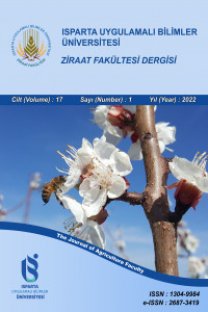Domuz Ayrığında (Dactylis glomerata L.) Olgun Embriyodan Bitki Rejenerasyonu
Dactylis glomerata, embriyo, rejenerasyon
Plant Regeneration from Mature Embryo of Orchardgrass (Dactylis glomerata L.)
Orchardgrass, embryo, regeneration,
- ISSN: 1304-9984
- Yayın Aralığı: Yılda 2 Sayı
- Başlangıç: 2006
- Yayıncı: Isparta Uygulamalı Bilimler Üniversitesi
Sulama Birliği Üyelerinin Birliklere Bakış Açılarının Değerlendirilmesi: Isparta İli Örneği
Isparta İli Mera Tahdit Çalışmaları Bitirilmiş Parsellerin CBS Ortamında Değerlendirilmesi
Mehmet GENCER, LEVENT BAŞAYİĞİT
Domuz Ayrığında (Dactylis glomerata L.) Olgun Embriyodan Bitki Rejenerasyonu
Esin ŞAHİN, Metin TOSUN, KAMİL HALİLOĞLU
Ruminant ve Kanatlı Beslenmesinde Bezelye Kullanımı
Organik ve Konvensiyonel Gül (Rosa damascena Mill.) Yağlarının Koku Kalitesinin Karşılaştırılması
HASAN BAYDAR, Nilgün BAYDAR GÖKTÜRK
Isparta Yöresindeki Meyve Bahçelerinde Kullanılan Sulama Yöntemlerinin Analizi
ATILGAN ATILGAN, Özge ÖZDEMİR, HASAN ÖZ, Abdullah KADAYIFÇI, ULAŞ ŞENYİĞİT
Isparta İlinde Yağlık Güllerde (Rosa damascena) Strawberry latent ringspot virus
